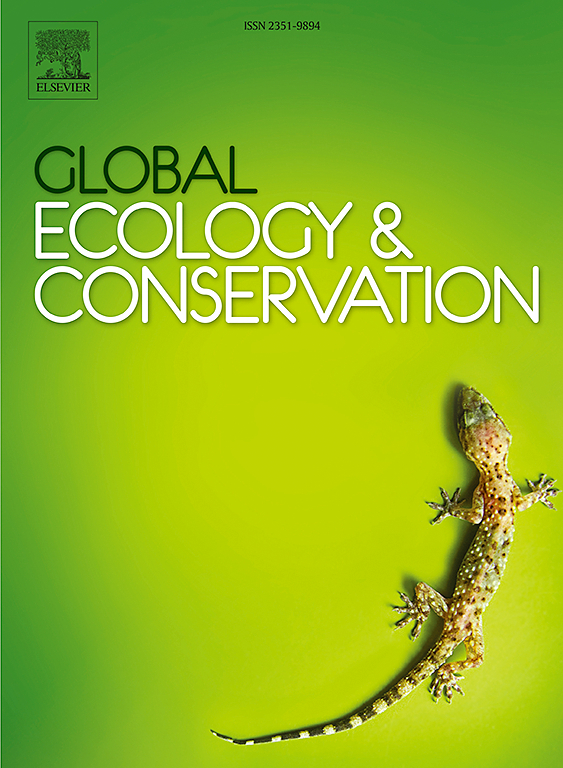Effect of bioturbation by plateau pika (Ochotona curzoniae) on soil carbon and nitrogen stocks in alpine meadows
IF 3.5
2区 环境科学与生态学
Q1 BIODIVERSITY CONSERVATION
引用次数: 0
Abstract
The plateau pika (Ochotona curzoniae) is a predominant small burrowing herbivore that plays a vital role within the alpine meadow ecosystem of the Qinghai-Tibet Plateau. This investigation centered on delineating the variances in bioturbation impacts by plateau pikas on soil characteristics in alpine meadows under distinct population densities. Outcomes indicated notable discrepancies in SOC, TC, and TN levels between surface soil depth (0–10 cm) and deeper depth (10–20 cm) under different Active Burrow Density (ABD). Across different depths, SOC, TC, and TN concentrations exhibited an initial rise followed by a decline with escalating Active Burrow Density (ABD), reaching peaks within the range of 240–330 burrows per hectare. Additionally, SOC and TN levels displayed synchronized fluctuations across different depths, while TC levels did not exhibit such synchronicity; TC content in deeper depth lagged behind that in surface depth. Moreover, surface soil stoichiometry (C:N ratio) diminished with heightened ABD, whereas deeper depth exhibited an opposing trend. These findings underscore how plateau pika bioturbation reshape nutrient distribution patterns and soil stoichiometry, thereby influencing carbon turnover processes and cycling rates. Drawing upon these findings, the study concludes that moderating plateau pika population density within reasonable thresholds, offers greater promise in stabilizing nutrient cycling processes in alpine meadow and upholding ecological equilibrium.
求助全文
约1分钟内获得全文
求助全文
来源期刊

Global Ecology and Conservation
Agricultural and Biological Sciences-Ecology, Evolution, Behavior and Systematics
CiteScore
8.10
自引率
5.00%
发文量
346
审稿时长
83 days
期刊介绍:
Global Ecology and Conservation is a peer-reviewed, open-access journal covering all sub-disciplines of ecological and conservation science: from theory to practice, from molecules to ecosystems, from regional to global. The fields covered include: organismal, population, community, and ecosystem ecology; physiological, evolutionary, and behavioral ecology; and conservation science.
 求助内容:
求助内容: 应助结果提醒方式:
应助结果提醒方式:


